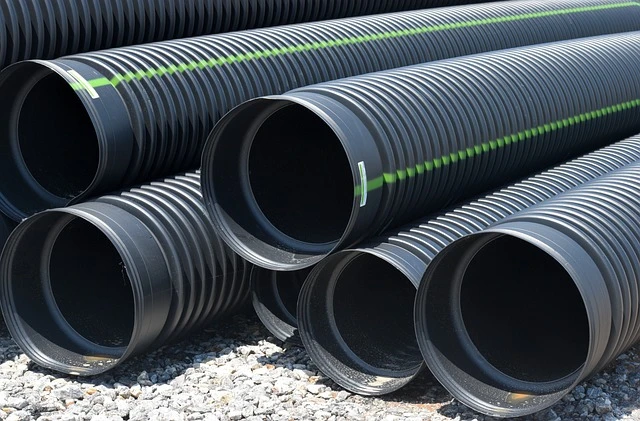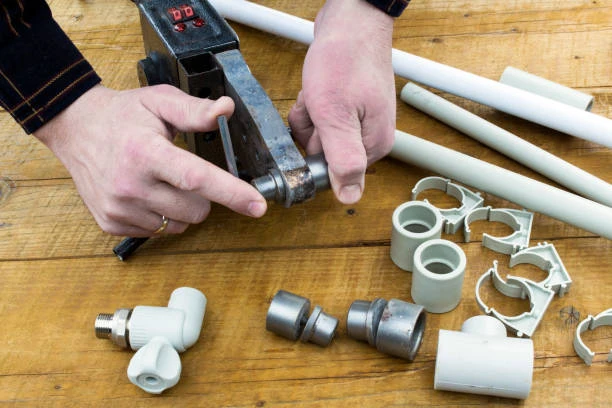PPR (Polypropylene Random Copolymer) pipes are a popular choice in plumbing due to their durability, corrosion resistance, and versatility. However, like any plumbing material, they can encounter issues that may lead to inefficiencies, leaks, or system failures. This comprehensive guide will explore essential tips for preventing and managing PPR Pipe issues, ensuring your plumbing system remains in optimal condition.
Understanding PPR Pipe
What Are PPR Pipe?
PPR pipes are made from polypropylene, a thermoplastic polymer known for its excellent physical and chemical properties. Key characteristics include:
- Durability: PPR pipes can last over 50 years under normal conditions.
- Chemical Resistance: They resist a wide variety of chemicals, making them suitable for many applications.
- Temperature Tolerance: PPR pipes can handle temperatures ranging from -20°C to 95°C.
- Eco-Friendly: Non-toxic and recyclable, PPR pipes contribute to sustainable practices.
Common Applications of PPR Pipe
PPR pipes are widely used in various sectors, including:
- Residential Plumbing: For hot and cold water supply.
- Irrigation Systems: Commonly used in agriculture.
- HVAC Systems: Suitable for heating and cooling applications.
- Industrial Uses: Effective for transporting chemicals and gases.
Preventing PPR Pipe Issues
Preventive measures are crucial in maintaining the integrity of PPR pipes. Here are some effective strategies:
1. Proper Installation
Importance: The foundation of a reliable plumbing system starts with correct installation.
- Qualified Professionals: Always hire experienced plumbers who understand the nuances of PPR pipe installation.
- Follow Manufacturer Guidelines: Adhere strictly to the specifications and recommendations provided by the pipe manufacturer.
- Use Correct Fittings: Ensure that fittings and connectors are compatible with PPR pipes to prevent leaks and stress points.
2. Regular Inspections
Importance: Routine inspections help identify potential issues before they escalate.
- Visual Checks: Regularly examine visible piping for signs of wear, discoloration, or leaks.
- Monitor Water Pressure: Abnormal pressure can indicate blockages or potential leaks. Install pressure gauges for monitoring.
- Check for Moisture: Inspect areas around pipes for unexplained dampness or water accumulation.
3. Temperature Control
Importance: PPR pipes are sensitive to temperature fluctuations.
- Insulation: Insulate pipes in areas with extreme temperature variations, such as basements and attics, to prevent thermal expansion and contraction.
- Avoid Direct Heat Sources: Keep pipes away from heaters or any direct sources of heat to reduce the risk of warping.
4. Chemical Considerations
Importance: Certain chemicals can degrade PPR material over time.
- Identify Potential Chemicals: Be aware of any chemicals that may come into contact with your pipes, especially in industrial settings.
- Use Compatible Materials: Ensure that any substances transported through PPR pipes are compatible and won’t cause deterioration.
5. Proper Support and Securing
Importance: Proper support reduces stress on pipes.
- Support Brackets: Install support brackets at appropriate intervals to prevent sagging and movement, which can lead to punctures or breaks.
- Avoid Over-tightening: Be cautious not to over-tighten clamps or fittings, as this can create stress points.
Managing PPR Pipe Issues
Despite preventive measures, issues may still arise. Here’s how to effectively manage them:
1. Identifying Common Problems
Understanding common issues will help in diagnosing problems early:
- Leaking Joints: Often caused by improper installation or damage to fittings.
- Cracking: Can occur due to thermal stress or exposure to harsh chemicals.
- Discoloration: May indicate chemical degradation or sediment buildup.
2. Repair Techniques
When issues arise, knowing how to repair them is vital.
Leaking Joints
- Turn Off Water Supply: Always shut off the water before making repairs.
- Inspect the Joint: Identify the source of the leak—this could be a loose fitting or a damaged joint.
- Tighten Fittings: If the fitting is loose, try tightening it gently.
- Use Joint Sealant: For persistent leaks, apply a pipe joint sealant compatible with PPR pipes.
Cracked Pipes
- Cut Out the Damaged Section: Use a pipe cutter to remove the cracked section, making clean cuts.
- Prepare Replacement Pipe: Cut a new piece of PPR pipe to fit the gap.
- Heat and Weld: Use a heat gun to soften the ends of both the existing and new pipes, then join them together.
Discolored Pipes
- Assess the Cause: Determine if discoloration is due to external factors (like rust) or internal issues (like chemical exposure).
- Flush the System: In some cases, flushing the pipes with clean water can remove buildup.
- Replace Affected Sections: If discoloration is severe, replacing the affected sections may be necessary.
3. Emergency Response
In cases of severe leaks or pipe failures, swift action is crucial:
- Shut Off the Main Water Supply: This will prevent further damage and flooding.
- Assess the Damage: Determine the extent of the damage to decide whether to repair or replace.
- Contact Professionals: For significant damage, consult a licensed plumber to ensure proper repairs are made.

Best Practices for Long-Term Maintenance PPR Pipe
Maintaining PPR pipes is crucial for longevity and efficiency:
1. Regular Maintenance Schedule
- Set a Schedule: Create a regular maintenance schedule for inspections, cleaning, and necessary repairs.
- Document Findings: Keep records of inspections and any repairs made for future reference.
2. Educate Users
- Awareness: Inform all household members or employees about proper usage and potential issues related to PPR pipes.
- Reporting Issues: Encourage reporting of any unusual signs, such as leaks or changes in water pressure.
3. Upgrade and Replace
- Monitor Pipe Age: Regularly assess the age of your PPR pipes, especially in older buildings.
- Consider Upgrades: If you notice frequent issues, it might be time to consider upgrading to newer materials or systems.
Conclusion PPR Pipe
Preventing and managing PPR pipe issues requires a combination of proactive maintenance, proper installation, and timely repairs. By understanding the common problems associated with PPR pipes and implementing effective strategies, you can ensure a reliable plumbing system that lasts for decades. Whether through regular inspections or prompt repairs, being vigilant will save time, money, and hassle in the long run.
FAQs
1. How can I tell if my PPR pipe is leaking?
Look for signs of dampness, water pooling, or sudden drops in water pressure. Conduct visual inspections regularly.
2. What should I do if my PPR pipe cracks?
Shut off the water supply, cut out the damaged section, and replace it with a new piece using proper welding techniques.
3. Can PPR pipes be used for hot water applications?
Yes, PPR pipes can handle temperatures up to 95°C, making them suitable for hot water supply systems.
4. How often should I inspect my PPR pipes?
It’s advisable to inspect your pipes at least once a year, or more frequently if they are in high-stress areas.
5. Are PPR pipes resistant to chemicals?
PPR pipes have good chemical resistance, but it’s essential to verify compatibility with specific chemicals to prevent degradation.


















